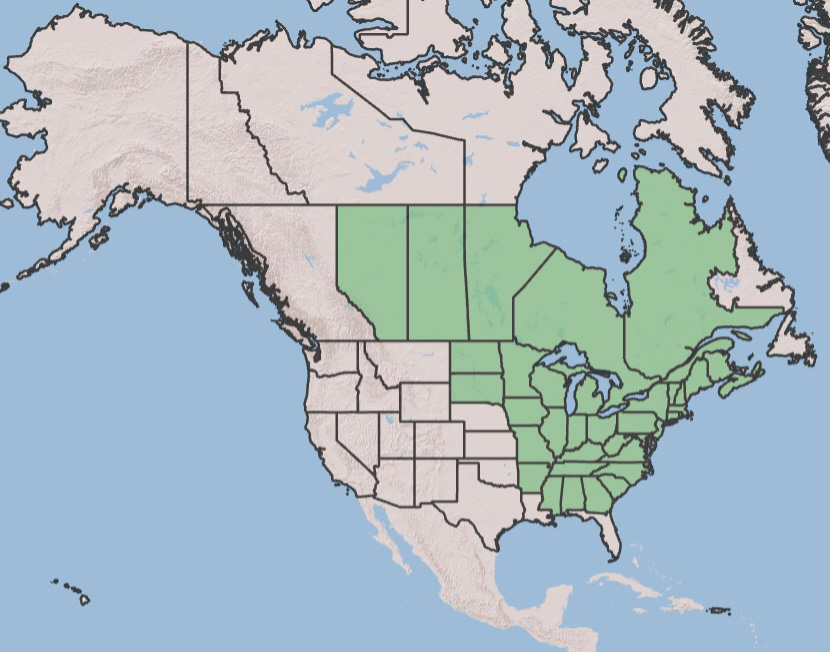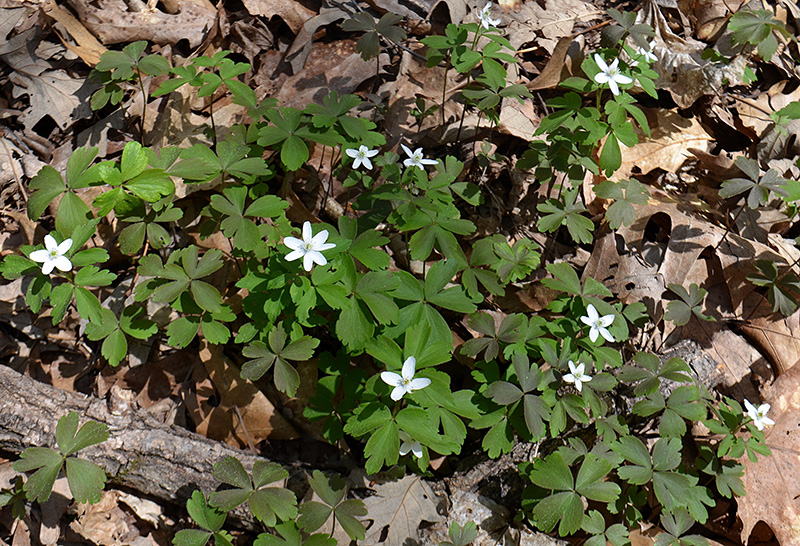Wood Anemone (Anemone quinquefolia)
By Christopher David Benda

This lovely woodland plant is called wood anemone and is in the Buttercup family (Ranunculaceae). The name “Anemone” refers to the god of the winds, Anemos and means “windflower,” referring to the fluffy seeds of some species that are dispersed by the wind. Others suggest that the flowers open in the spring wind. According to Greek mythology, Zephyr, the god of the west wind, was infatuated with a nymph named Anemone. Zephyr’s wife Flora was angered by this, so she turned Anemone in to a flower that would open when wooed by Boreas, the god of the north wind. The compound leaves are split into five sections, hence the name “quinquefolia” or “five-leaved.”

Each plant has a single flower with five, white petal-like structures called sepals. Dependent on sunlight, the flowers tend to close up on cloudy days and at night, thus restricting access to pollinators that are active during the day (mostly small bees and flies). This is unusual since many white flowers remain open at night to attract nocturnal pollinators. However, it makes sense for the flowers to close up when cloudy, as clouds often mean rain. The petals close up to protect the reproductive parts from the rain, plus the flying insects are hiding and not flying around pollinating flowers when it’s raining.

Like with most organisms, growth is a tradeoff. Putting energy into producing leaves allows the plant to attain more energy through photosynthesis, whereas dedicating resources to reproductive structures like flowers allows the plant to procreate. Plants tend to be more vegetative (focused on growth) and reproductive (focused on producing seeds) early in life. Thus, non-flowering individuals of this species have one leaf divided into five leaflets, while flowering plants have three sets of leaves, each with three leaflets.
This is a colonial species that flowers early with other spring ephemerals in rich, shaded woods before the trees start growing leaves. This is mostly a northeastern species that extends as far south as Alabama and as far west as North Dakota.
